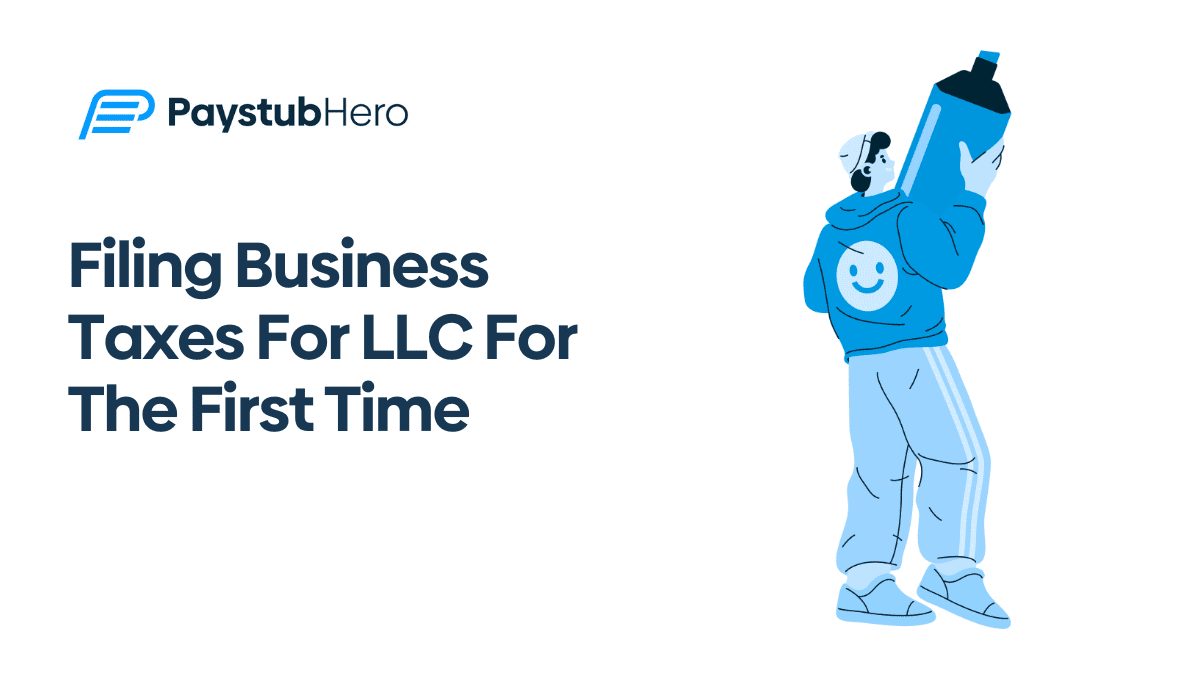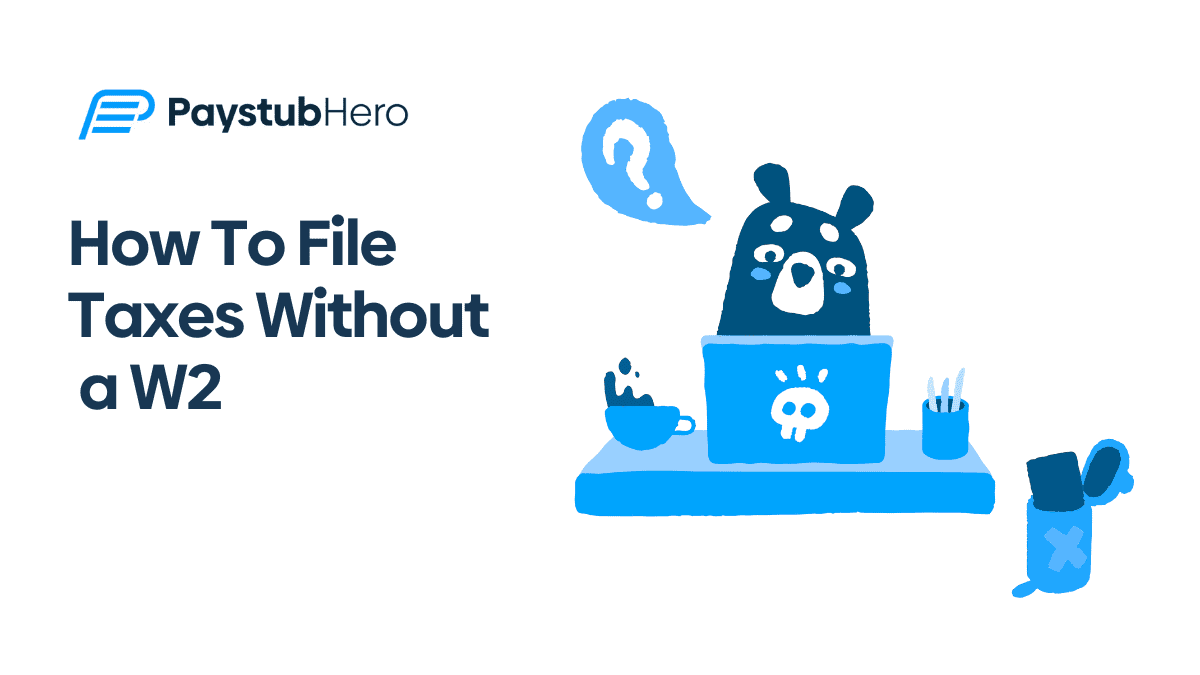In the thriving world of entrepreneurship and freelancing, the notion of being self-employed has become an increasingly popular career choice. With the allure of flexible hours, the freedom to choose projects, and often the potential for financial security, who wouldn’t be enchanted by the idea of self-employment?
However, the path to becoming your own boss is accompanied by its own unique set of responsibilities and challenges, one of which is validating your income.
Income validation, or providing proof of income, might seem like a relatively simple task if you’re traditionally employed. After all, your employer typically provides paystubs or W-2 forms that readily display your income.
But for self-employed individuals, the landscape is different. Your earnings can fluctuate, you may have multiple income sources, or perhaps you don’t have a formal payroll system in place.
This can make the process of proving your income more intricate. So, what exactly is self-employed proof of income, and how do you present it?
In the simplest terms, self-employed proof of income is the documentation or evidence you provide to certify your earnings as a self-employed professional. This proof becomes necessary in a variety of scenarios, whether you’re planning a significant financial move or just taking care of routine matters.
The importance of understanding the concept and significance of self-employed proof of income cannot be overstated. However, navigating the world of income verification doesn’t have to be intimidating.
By exploring the range of income verification documents available, learning how to use them, and understanding where tools like online paystub generators fit in, you’ll be well equipped to prove your income, whatever your self-employment journey may demand.
Table of Contents
- Introduction: The Intricacies of Self-Employed Proof of Income
- Understanding the Need for Proof of Income: More Than Just Numbers
- What are the Income Verification Documents for the Self-Employed? A Deep Dive into Your Financial Paper Trail
- Creating Your Self-Employed Proof of Income: A Step-By-Step Guide to Credibility
- Paying Yourself from Your LLC: A Simple Guide to Structuring Your Earnings
- How to Be Self-Employed and Secure Personal Loans: Charting the Course to Financial Freedom
- Conclusion: Unleash Your Entrepreneurial Potential with Confidence and Clarity
Understanding the Need for Proof of Income: More Than Just Numbers
Whether you’re a seasoned entrepreneur or just starting your self-employment journey, you’ll quickly realize that being your own boss isn’t only about delivering your service or product. It also involves some intricate financial management.
One critical aspect of this financial landscape is proving your income. But why is this so important?
Well, the reality is that our world operates largely on credit. You need credit for significant purchases like homes and cars, or to secure personal loans for self-employed proof of income, perhaps for a business expansion or personal needs.
Even smaller-scale activities like renting an apartment or applying for a credit card often require some proof of income. In these scenarios, the lender or service provider wants to be sure that you can meet the financial obligations you’re signing up for.
When you’re traditionally employed, your employer provides this proof, usually in the form of a paycheck or a W-2. But as a self-employed individual, you’re both the employer and the employee, and so the responsibility falls on you to prove your income.
The need for proof of income for self-employed individuals is further heightened by the fact that self-employment income often varies, unlike traditional employment where pay is generally steady and predictable.
Self-employed individuals might have high-income months and lower-income months based on the nature of their business or the projects they undertake. This can make lenders or service providers a little more cautious, and hence the requirement for proof of income becomes even more crucial.
Understanding this need and preparing for it can save you a lot of trouble and ensure that your self-employment journey is smooth sailing, whether you’re securing a loan, renting an apartment, or making any other financial moves.
With the right income verification documents and strategies, you can accurately and confidently present your self-employed proof of income.
What are the Income Verification Documents for the Self-Employed? A Deep Dive into Your Financial Paper Trail
Being self-employed often brings with it a diverse and dynamic income. You might be juggling different projects, each with its own pay schedule, or your earnings might vary based on the time of year or the specific demands of your business.
In such a scenario, providing a comprehensive picture of your income might require more than just a single document. Luckily, there’s a range of income verification documents at your disposal:
- Tax Returns: These are often your go-to documents when it comes to income verification. Your annual tax return gives a detailed overview of your yearly earnings and the taxes you’ve paid. It includes your gross income, your deductions, and your net income, providing a comprehensive picture of your financial status.
- Bank Statements: Bank statements are like a financial diary. They record all your transactions – the payments you’ve received, your expenditure, any loans or overdrafts. For self-employed individuals, these can be a valuable tool to highlight regular income flows, especially if you receive payments directly into your account.
- Profit and Loss Statements: If you’re running your own business, then profit and loss statements become an essential part of your income verification toolkit. These documents give a snapshot of your business’s financial health, clearly illustrating your income against your operational costs. You can generate these statements yourself or with the help of accounting software.
- Paystubs: Traditionally, paystubs are provided by an employer, but as a self-employed individual, you might think you don’t have access to this option. However, online services like Paystubhero offer a perfect solution, allowing you to generate professional paystubs to serve as proof of income.
- Proof of Income Letter: Also known as an income verification letter, this is a document that formally states your income as a self-employed individual. It typically includes your name, your business name, the nature of your business, and a clear statement of your income. It’s advisable to have this letter notarized for an extra layer of legitimacy.
Remember, the more thorough and accurate your income verification documents are, the better your chances of fulfilling your financial objectives, whether it’s securing a loan, renting an apartment, or making any other major financial decisions.
Providing a complete and detailed picture of your income can instill confidence in lenders or service providers, smoothing your self-employment journey.
Creating Your Self-Employed Proof of Income: A Step-By-Step Guide to Credibility
Given the importance of proof of income for self-employed individuals, knowing how to create a clear and convincing document is crucial. One of the key resources you have at your disposal is a proof of income letter, also known as an income verification letter.
This document is a formal declaration of your income and can serve as an effective means of illustrating your earnings. But how do you go about creating one? Let’s break it down:
- Include Your Personal Information: Begin the letter by clearly stating your name and the name of your business. You might also want to include your business address and contact details for a complete representation.
- Describe Your Business: Briefly describe what your business does. This gives context to your income and can provide additional credibility, especially if you’re operating in a well-known industry or have a specific niche.
- Declare Your Income: State your income clearly. You might choose to include your annual income, or break it down further into monthly or weekly earnings. Be sure to be as accurate as possible to avoid any potential misunderstandings or discrepancies.
- Get it Notarized: While not always necessary, getting your proof of income letter notarized can add an extra level of authenticity. This can be particularly helpful if you’re applying for a large loan or if the recipient of the letter requests it.
Creating a proof of income letter is a fairly straightforward process, but it’s also one that requires precision and transparency.
Remember, this document serves as a formal statement of your earnings. A well-crafted proof of income letter not only meets the requirement for income verification but also presents a professional image of your business, further boosting your credibility in the eyes of lenders or service providers.
Paying Yourself from Your LLC: A Simple Guide to Structuring Your Earnings
If you’re self-employed and running a Limited Liability Company (LLC), you might be wondering about the most efficient way to pay yourself.
After all, you’re not just an employee who receives a paycheck; you’re also the owner of the business, and your income is directly tied to its performance. In this context, understanding how to structure your earnings and pay yourself from your LLC is a key aspect of your financial management.
Unlike a corporation where salaries are a standard way to disburse income, an LLC offers more flexibility. Here are a few steps to help you navigate this process:
- Understand the Basics: As an LLC owner, you’re not considered an employee. Instead, you’re likely to take draws or distributions from the company’s profits. This isn’t a salary in the traditional sense; it’s a share of the profits that the business makes.
- Determine Your Pay Structure: The way you pay yourself will depend on several factors, including the performance of your business, your personal financial needs, and tax considerations. You might decide to take a regular draw, or perhaps a more sporadic distribution based on your business’s income flow.
- Document Your Payments: Even though you’re not receiving a traditional paycheck, it’s important to document your payments for tax purposes and income verification. You can do this by creating a paystub for each payment you take. Online tools like Paystubhero can help you do this efficiently and professionally.
- Consult a Professional: Paying yourself from an LLC can have tax implications, and the optimal approach can vary based on your specific circumstances. It’s always a good idea to consult with a tax professional or financial advisor to ensure you’re managing your income in the most beneficial way.
Remember, one of the great advantages of being self-employed is the ability to shape your financial landscape. When it comes to paying yourself from your LLC, the key is to understand your options, make informed decisions, and maintain clear records.
This way, you can not only enjoy the fruits of your labor but also ensure you’re well-equipped to prove your income when necessary.
How to Be Self-Employed and Secure Personal Loans: Charting the Course to Financial Freedom
Navigating the world of personal loans can feel like a daunting task for self-employed individuals. Given the inherent variability of self-employment income, lenders might perceive you as a higher risk compared to someone with a regular paycheck.
However, with the right approach and preparation, being self-employed should not preclude you from securing the personal loans you need to finance your dreams or achieve your financial goals.
Here are some steps to help you in this journey:
- Keep Comprehensive Financial Records: As a self-employed person, having detailed and accurate financial records is paramount. This includes your income tax returns, profit and loss statements, bank statements, and even professionally-generated paystubs. These documents not only serve as proof of income but also paint a clear picture of your financial health and stability.
- Maintain a Healthy Credit Score: A good credit score is a strong indication of your creditworthiness. It reassures lenders that you are capable of responsibly handling credit and repaying your debts on time. Therefore, always strive to maintain a good credit score by promptly paying your bills, minimizing your debt, and regularly checking your credit report for any discrepancies.
- Create a Strong Business Plan: If your personal loan is intended for business purposes, having a strong and realistic business plan can significantly enhance your credibility. It shows lenders that you have a clear path to profitability, which in turn assures them of your ability to repay the loan.
- Consider a Co-signer or Collateral: If you’re finding it challenging to secure a loan due to your self-employment status, you might consider finding a co-signer or offering collateral. Both these options can provide lenders like plenti personal loans with additional assurance and improve your chances of securing the loan.
Being self-employed shouldn’t stand in the way of your financial aspirations. While you might face some unique challenges when applying for personal loans, with proper planning, thorough documentation, and a clear understanding of the lending landscape, you can successfully navigate this process.
Remember, as a self-employed individual, you’re in charge of your financial destiny. Embrace this role and take the steps necessary to secure your financial future.
Conclusion: Unleash Your Entrepreneurial Potential with Confidence and Clarity
The journey of self-employment is filled with rewards, challenges, and countless learning opportunities. Amid the many facets of being your own boss, understanding and managing your income is pivotal. Proof of income may not be the most exciting part of your entrepreneurial venture, but it’s undeniably crucial.
From securing personal loans for self-employed proof of income to establishing credibility with business partners, a clear demonstration of your earnings is a powerful tool in your entrepreneurial toolkit.
In the dynamic world of self-employment, income can ebb and flow, making it somewhat more complex to quantify than a standard salary. However, with a keen understanding of the income verification documents available, the know-how to create your own, and the assistance of services like Paystubhero, you can effectively navigate this landscape.
Whether it’s a tax return, bank statement, profit and loss statement, or a self-generated paystub, each document serves as a testament to your entrepreneurial efforts and achievements.
Paying yourself from your LLC, proving your income, securing personal loans – these are all part of the larger financial picture of self-employment. Embrace these elements as crucial aspects of your entrepreneurial journey. Understand them, master them, and use them to your advantage.
Remember, the path of self-employment is not just about managing a business; it’s about managing a financial identity. It’s about demonstrating your financial stability and reliability as you navigate your unique path to success.
By securing your proof of income and managing your earnings wisely, you’re not just responding to a bureaucratic need; you’re bolstering your financial confidence, affirming your entrepreneurial credibility, and setting the stage for future success.
Ready to streamline your income verification process and boost your financial management skills? Try Paystubhero today. As an entrepreneur, you wear many hats.
Let us wear one for you by simplifying your income verification process and helping you generate professional paystubs effortlessly. Step into the financial aspect of your entrepreneurial role with confidence and efficiency.
Unleash your entrepreneurial potential with Paystubhero. It’s as easy as 1-2-3!
Frequent Asked Questions
1. How do I prove income if self-employed?
- As a self-employed individual, you can prove income through several documents like tax returns, profit and loss statements, and bank statements. Additionally, you can generate a paystub through online tools like Paystubhero.
2. How do I prove self-employment income without a 1099?
- Even without a 1099, you can verify your income by providing a copy of your tax return, particularly Schedule C. Other documents like profit and loss statements or bank statements also serve as valid proof of income.
3. How can I get proof of income without pay stubs?
- Besides paystubs, there are several documents you can use for income proof. These include tax returns, bank statements, and profit and loss statements. These records should clearly reflect your earnings.
4. How do you write proof of income?
- To write proof of income, start with your personal and business details, then state your income clearly. Describe your business and consider getting the document notarized for added credibility. You can also use an online service like Paystubhero to create professional-looking income proofs.








